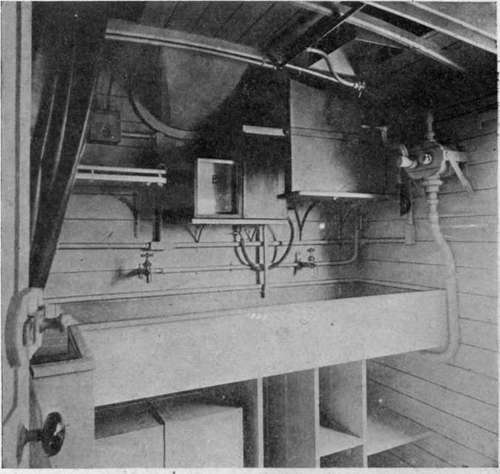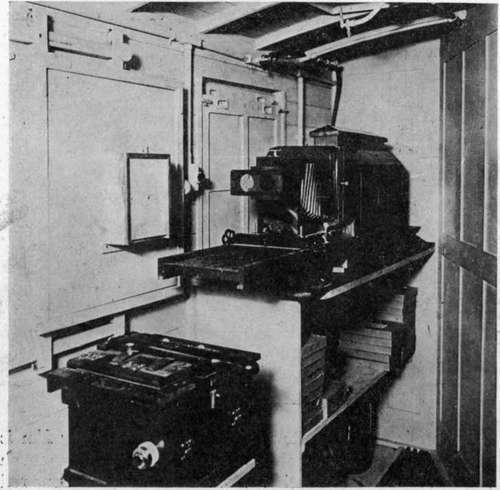Methods Of Plate Development
Description
This section is from the book "Airplane Photography", by Herbert E. Ives. Also available from Amazon: Airplane photography.
Methods Of Plate Development
Where speed is not required the simplest and commonest mode of developing plates is in the tray, one plate at a time. Common practice is to examine the plate at intervals during development, and discontinue the operation on the basis of its appearance.

Fig. 113. - Mobile photographic laboratory.
This is only possible if the plates used are insensitive to some light by which the eye can see. Deep red light is suitable for ordinary and most orthochromatic plates. A faint blue-green may be used with some panchromatic plates. The best practice, however, is to develop by time in total darkness, whereby all chance of dark room fog is avoided. Development time for plates of the average exposure of the one to be developed is either known from previous experience, or is found by trial on the first one. Development by time results in negatives of densities varying with the exposures, but, as was brought out in the discussion of sensitcmetry, this difference can be compensated for by the choice of the paper used for printing, and by its treatment.

Fig. 114. - Interior of photographic trailer, developing room.
Where larger quantities of plates are to be handled tank development is adopted. In ordinary tank development the plates are placed in grooved tanks, into which is poured first the developer, next the rinsing water, and then the hypo. It has been customary in tank development as practiced for peace-time work to use dilute developer, requiring from ten to thirty minutes, but speed requirements in war-time aerial photography dictate the use of full-strength quick-acting developer. An improvement on the simple grooved tank is provided by metal cages or racks, each holding a dozen or more plates, which may be introduced or removed from the tank as a Unit (Fig. 116).

Fig. 115. - Interior of photographia trailer. Ënlarging caméra and printer.
The core rack system combines certain of the features of both tray and tank development. Each plate is~ inserted in a isepaTate utetal frame with projecting-lugs to- rest on the top of the tank and so suspend the plate in the solution. The process of development is the same as in the tank system, but any individual plate may be examined and removed.
Continue to:
- prev: V. Methods Of Handling Plates, Films And Papers. Chapter XXIII. The Developing And Drying Of Plates And Films. Field Requirements
- Table of Contents
- next: Film Developing And Fixing
Tags
camera, lens, airplane, aerial, film, exposure, photography, maps, birdseye
